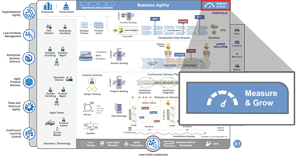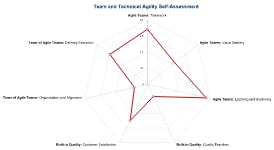Skip to content
Share
Explore

Scaled Agile Framework - SAFe 5
 Measure and Grow
Measure and Grow
Content Page. Measure and Grow is the way portfolios evaluate their progress towards business agility and determine their next improvement steps.

Measure and Grow
Details
SAFe Business Agility Assessment

Running the Business Agility
Analyzing Business Agility Assessment Results
Taking Action on the Business Agility Assessment
SAFe Core Competency Assessments

Running a Core Competency Assessment
Analyzing Results of a Core Competency Assessment
Taking Action from a Core Competency Assessment

Prioritizing Improvement Opportunities

Core Competency Assessment Downloads and Grows Forums
Celebrate successes
Learn More
Navigation Bar
This link can't be embedded.
Want to print your doc?
This is not the way.
This is not the way.

Try clicking the ⋯ next to your doc name or using a keyboard shortcut (
CtrlP
) instead.

